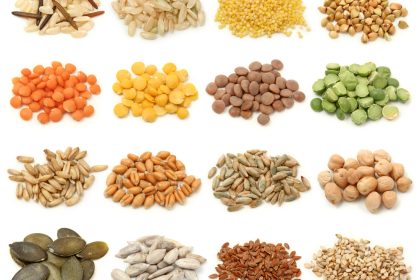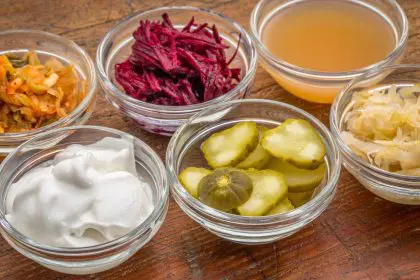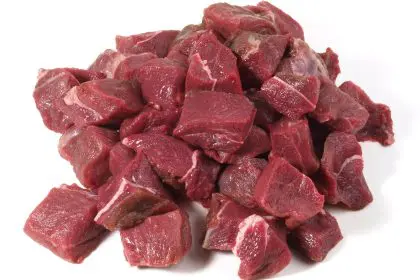That burn you feel after biting into a jalapeño isn’t just happening in your mouth. It’s triggering a cascade of biological reactions that continue working long after your meal ends. The fiery compounds in spicy foods are actually changing your metabolism in ways that might surprise both spice lovers and those who fear the heat.
While most of us focus on the immediate sensation—that delicious pain that has us reaching for water or milk—your body is launching a complex response that affects everything from fat burning to appetite regulation. These metabolic changes explain why cultures with traditionally spicy cuisines often show different body composition patterns despite sometimes higher caloric intakes.
Let’s explore what actually happens inside your body when you eat spicy foods, why the metabolic effects matter, and how you might strategically use this information whether you’re a heat-seeker or spice-cautious. The metabolic story behind spicy foods goes far deeper than the momentary burn.
The heat-generating reaction starts immediately
When capsaicin—the active compound in hot peppers—hits your tongue, it triggers more than just a sensation of heat. It activates a cascade of thermogenic reactions that affect your entire body.
Thermoreceptor activation happens instantly as capsaicin binds to TRPV1 receptors in your mouth. These receptors normally respond to actual heat, but capsaicin tricks them into firing. This sensory confusion is why your brain perceives spice as “hot” even though no temperature change occurs. This neural activation begins a chain reaction affecting your metabolism.
Brown fat activation follows within minutes of consuming spicy food. Unlike white fat that stores calories, brown adipose tissue burns calories to generate heat. Capsaicin specifically stimulates these brown fat cells, creating a temporary increase in calorie burning. This effect explains why core body temperature often rises slightly after consuming spicy meals.
Catecholamine release—specifically adrenaline and noradrenaline—occurs as part of your body’s response to the perceived “threat” of capsaicin. These hormones increase your metabolic rate by triggering glucose release and accelerating heart rate. This stress response creates a temporary metabolism boost of 8-20% that can last up to 30 minutes after eating.
Metabolic rate increases remain measurable for up to 3 hours after consuming spicy foods. Research shows this thermogenic effect burns an additional 50-100 calories following a significantly spicy meal—a modest but meaningful increase, especially when experienced regularly over time.
The thermic effect of food—the energy cost of digesting what you eat—increases by approximately 10-15% when meals contain capsaicin compared to identical non-spicy meals. This increased digestion cost essentially means you absorb slightly fewer net calories from spicy foods even if their total caloric content is identical to non-spicy versions.
The fat burning advantage continues for hours
Beyond the immediate thermogenic response, capsaicin triggers more lasting changes in how your body processes and stores fat through several distinct mechanisms.
Lipid oxidation—your body’s process of breaking down fats for energy—increases by approximately 15-20% for up to 4 hours after consuming spicy foods. This preferential fat burning explains why some studies show capsaicin supplementation associated with small but consistent reductions in body fat percentage over time.
Adipogenesis inhibition means capsaicin literally prevents the formation of new fat cells. Research shows regular capsaicin consumption suppresses the genetic expression patterns that trigger the creation of new adipocytes. This inhibition explains why habitual spicy food eaters show different fat cell patterns compared to those who avoid spice.
Stored fat mobilization accelerates as capsaicin triggers increased activity in the sympathetic nervous system. This activation helps release fatty acids from storage, making them available for energy use. This mobilization effect works best when combined with physical activity, creating a synergistic fat-burning effect when exercise follows spicy meals.
The abdominal fat targeting appears particularly pronounced. Studies using thermal imaging show greater metabolic activity specifically in abdominal regions following capsaicin consumption compared to other body areas. This preferential effect on visceral fat—the dangerous fat surrounding organs—may explain some of the cardiovascular benefits associated with spicy food consumption.
White-to-beige fat conversion represents perhaps the most interesting metabolic effect. Capsaicin can trigger what scientists call “browning” of white adipose tissue, essentially transforming some storage fat into more metabolically active beige fat that burns rather than stores calories. This conversion creates lasting metabolic benefits beyond the immediate post-meal period.
The gut bacteria transformation few people know about
Beyond direct metabolic effects, spicy foods create significant changes in your gut microbiome that indirectly influence metabolism through several surprising pathways.
Prebiotic effects of capsaicin selectively feed beneficial bacteria species while inhibiting pathogenic ones. This microbial shift favors bacteria that produce short-chain fatty acids, which help regulate metabolism and reduce inflammation. This prebiotic action explains why cultures with traditionally spicy cuisines often show different microbiome profiles associated with metabolic health.
Intestinal permeability decreases with regular capsaicin consumption, despite the burning sensation suggesting otherwise. This improved gut barrier function reduces metabolic endotoxemia—the leakage of inflammatory compounds from the gut that contribute to metabolic disorders. This protective effect helps explain the paradoxical anti-inflammatory properties of spicy foods.
Satiety signal enhancement occurs as specific gut bacteria stimulated by capsaicin produce more GLP-1 and other hormones that signal fullness to your brain. This hormonal signaling helps explain why moderate spice inclusion in meals often leads to reduced total calorie consumption in subsequent meals.
Glucose stability improves as capsaicin-stimulated microbes produce compounds that enhance insulin sensitivity. Studies show lower post-meal blood sugar spikes following spicy versus non-spicy versions of the same meal, with effects persisting for up to 12 hours through microbiome-mediated mechanisms.
The bile acid metabolism shift may be the most significant gut-related effect. Capsaicin alters how gut bacteria process bile acids, converting more primary bile acids into secondary forms that act as signaling molecules improving metabolic function. These altered bile acids activate receptors that regulate glucose metabolism and energy expenditure throughout the body.
The appetite control effect works in multiple ways
Spicy foods affect not just how you metabolize calories but also how many you consume through several distinct appetite-regulating mechanisms.
Sensory specific satiety increases with spicy food consumption. This phenomenon—where food becomes less appealing as you continue eating it—happens more rapidly with spicy foods. This accelerated sensory satisfaction explains why people typically eat smaller portions of spicy meals before feeling satisfied compared to bland versions of the same dish.
Eating speed naturally slows with spicier foods as people take smaller bites and longer pauses between them. This reduced consumption rate allows satiety hormones more time to signal fullness before overconsumption occurs. Research shows that meals take approximately 15-20% longer to consume when significantly spicy, creating natural portion control.
Hunger hormone suppression occurs as capsaicin directly reduces ghrelin production—your primary hunger-stimulating hormone. This suppression creates reduced appetite that persists for 2-3 hours longer after spicy versus non-spicy meals with identical caloric content, creating natural intermittent fasting-like periods.
Hedonic eating—consuming food for pleasure rather than hunger—diminishes with regular spicy food consumption. Brain imaging studies show reduced activity in reward centers when participants view images of highly palatable, calorie-dense foods after consuming capsaicin. This dampened reward response helps explain why cultures with spicy food traditions often show more regulated eating patterns.
The water consumption increase associated with spicy foods creates additional satiety through stomach stretching and temporary caloric dilution. People typically drink 20-30% more water during and after spicy meals, creating greater volume in the digestive tract that triggers stretch receptors signaling fullness to the brain.
The metabolic acceleration varies between individuals
The metabolic response to spicy foods shows substantial individual variation based on several factors that explain why some people experience more pronounced effects than others.
Capsaicin sensitivity varies dramatically between individuals based on TRPV1 receptor genetics. People with certain receptor variants show metabolic responses up to three times stronger than those with less sensitive variants. This genetic variation explains why some people experience significant thermogenic effects from even mildly spicy foods while others require extreme heat to generate the same response.
Spice tolerance development diminishes acute metabolic effects over time through receptor downregulation. However, research shows that while the immediate burning sensation decreases with regular consumption, the metabolic benefits often persist or even increase as different mechanisms become more responsive with consistent exposure.
Age-related differences appear significant, with younger adults typically showing stronger thermogenic responses to identical capsaicin doses compared to older adults. This difference relates to natural age-related decreases in sympathetic nervous system responsiveness rather than changes in spice receptors themselves.
Sex differences emerge clearly in research, with women typically showing stronger and more sustained metabolic responses to capsaicin than men given equivalent body-weight-adjusted doses. These differences relate to hormonal influences on TRPV1 receptor sensitivity, with estrogen enhancing capsaicin response.
Body composition itself influences response magnitude, with leaner individuals typically showing stronger thermogenic effects from identical capsaicin doses compared to those with higher body fat percentages. This variable response relates to baseline sympathetic tone and brown fat quantities, both typically higher in leaner individuals.
The optimal timing maximizes metabolic benefits
When you consume spicy foods matters almost as much as the quantity for maximizing metabolic effects through several timing-related mechanisms.
Morning consumption creates stronger thermogenic effects due to natural circadian variations in metabolism. Research shows the same quantity of capsaicin consumed at breakfast increases metabolic rate approximately 10-15% more than when consumed at dinner, creating a longer-lasting energy expenditure increase throughout the day.
Pre-workout timing approximately 30-45 minutes before exercise creates synergistic fat-burning effects. The mobilized fatty acids from capsaicin’s action become readily available fuel during subsequent physical activity, potentially increasing fat oxidation during exercise by 15-20% compared to non-spicy pre-workout nutrition.
Fasted state consumption amplifies capsaicin’s effects on fat mobilization. Without competing dietary carbohydrates, your body more readily shifts to using the fatty acids released through capsaicin’s action. This timing strategy explains why some intermittent fasting protocols specifically recommend spicy tea or very low-calorie spicy broths during fasting periods.
Post-carbohydrate timing helps mitigate blood sugar spikes through capsaicin’s effect on insulin sensitivity. Consuming spicy additions with or immediately after carbohydrate-rich foods reduces glucose excursions by 15-25% compared to consuming the same carbohydrates without capsaicin, creating healthier metabolic responses to high-carb meals.
Consistent daily consumption rather than occasional intense exposure creates the most significant long-term metabolic adaptations. Research comparing daily moderate capsaicin consumption versus weekly high-dose exposure shows greater microbiome changes and fat-burning adaptations with the consistent approach despite equivalent total weekly capsaicin intake.
The different peppers create different effects
Not all spicy foods affect metabolism identically, as different pepper varieties contain distinct capsaicinoid profiles that trigger varied metabolic responses.
Capsaicin concentration varies dramatically between pepper varieties, with habaneros and scotch bonnets containing approximately 10-15 times more capsaicin than jalapeños. This concentration difference explains why smaller amounts of hotter peppers often create stronger metabolic effects than larger amounts of milder varieties.
Capsiate—found primarily in sweet peppers like CH-19 Sweet—creates similar metabolic effects to capsaicin without the intense burning sensation. This non-pungent compound activates the same thermogenic pathways but through slightly different receptor mechanisms, making it valuable for those seeking metabolic benefits without heat.
Dihydrocapsiate found in certain pepper varieties shows particularly strong effects on fat oxidation despite moderate heat levels. Research indicates this compound increases fat burning more specifically than general capsaicin, creating potentially greater body composition changes over time with regular consumption.
Nordihydrocapsiate demonstrates the strongest gut microbiome effects among capsaicinoids, particularly promoting bacteria species associated with reduced inflammation and improved metabolic health. This compound explains why some milder peppers still create significant health benefits despite moderate heat levels.
Black pepper’s piperine creates complementary but distinct metabolic effects through different receptor pathways than capsaicin. Combining piperine with capsaicin produces synergistic effects approximately 30% stronger than either compound alone. This synergy explains why culinary traditions often pair these spices in metabolically beneficial ways.
The practical incorporation for non-spice lovers
You don’t need to consume extremely spicy foods to benefit from capsaicin’s metabolic effects. Strategic approaches can create meaningful benefits even for those with low spice tolerance.
Distributed spice consumption—spreading smaller amounts throughout multiple daily meals—often creates stronger cumulative effects than a single spicy meal. This approach maintains elevated metabolism for more total hours while remaining tolerable for those with lower spice thresholds.
Encapsulated supplements provide precisely measured capsaicin doses without taste impact. These formulations deliver capsaicin directly to the digestive tract, bypassing most oral heat sensation while still triggering metabolic effects once absorbed. This approach works particularly well for those who want metabolic benefits but strongly dislike spicy flavors.
Topical applications like capsaicin-infused creams create localized metabolic activation when applied to areas with significant fat storage. Research shows these preparations increase local blood flow and fat mobilization in the application area, potentially creating spot-reduction effects when combined with exercise.
Culinary pairings can strategically moderate perceived heat while maintaining metabolic benefits. Combining capsaicin-containing ingredients with fats (like yogurt or avocado) or specific sweeteners (particularly erythritol) reduces perceived burning sensation by approximately 30% while preserving metabolic effects. These traditional pairings explain how cultures develop palatably spicy cuisines while maintaining health benefits.
Gradual tolerance building allows almost anyone to develop comfortable consumption levels that provide meaningful metabolic benefits. Research shows most people can increase their comfortable spice threshold by approximately 15-20% weekly through consistent exposure, eventually reaching levels that produce significant thermogenic effects without discomfort.
The relationship between spicy foods and metabolism represents a fascinating intersection of culinary tradition and modern metabolic science. The compounds that create that distinctive burn aren’t just flavoring your food—they’re triggering complex physiological responses that continue working long after the meal ends.
Whether you’re a dedicated heat-seeker or spice-cautious, understanding these metabolic mechanisms provides practical opportunities to enhance your metabolic health. From strategic timing to choosing specific pepper varieties to gradual adaptation approaches, the metabolic benefits of spicy foods are accessible regardless of your current spice tolerance.
Perhaps most interesting is how this scientific understanding validates traditional food wisdom from cultures that incorporated spicy ingredients for generations before modern metabolic science existed. The instinctive inclusion of these bioactive compounds in culinary traditions around the world reflects an intuitive understanding of their benefits that science is only now beginning to fully explain.

















